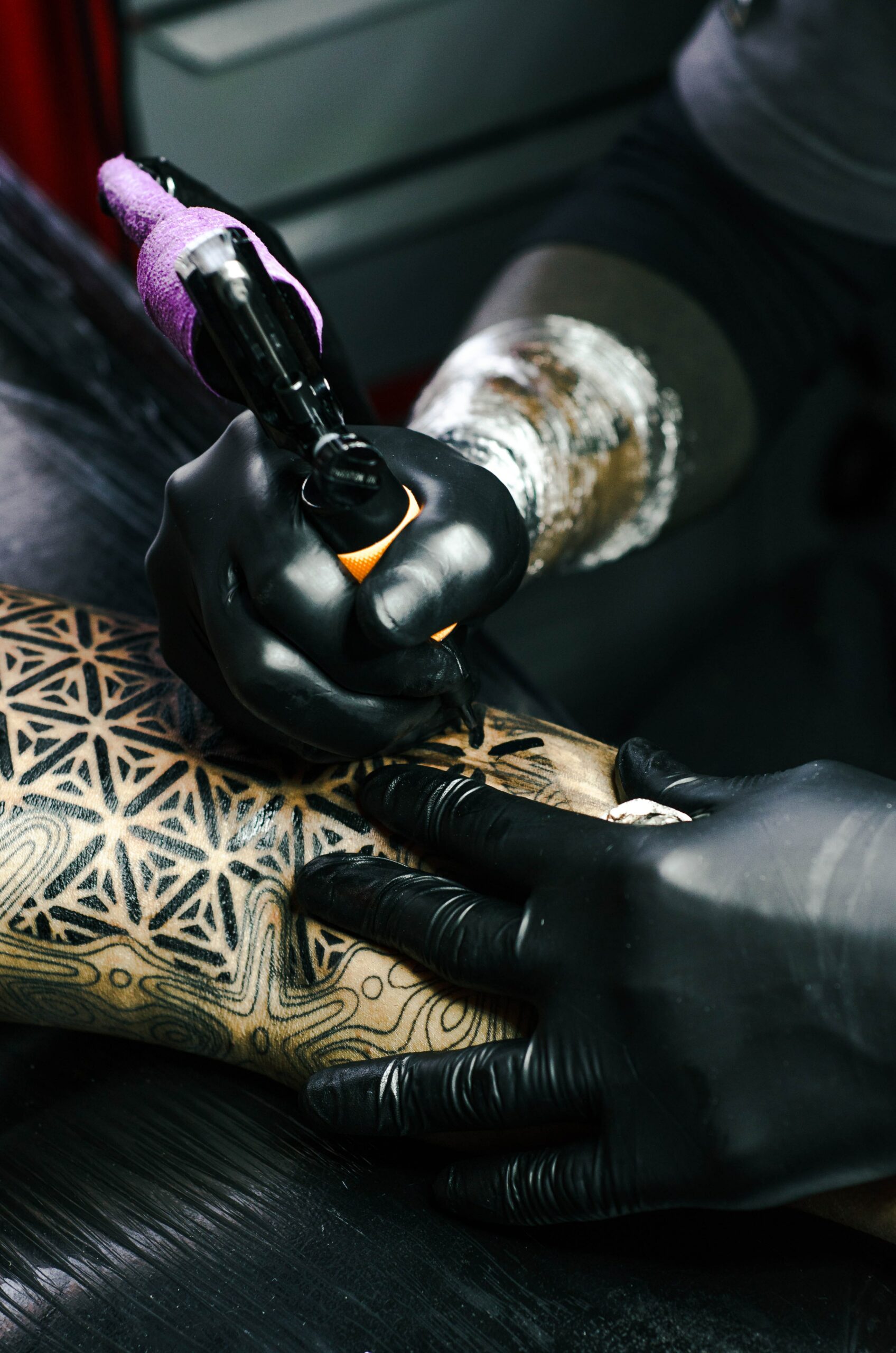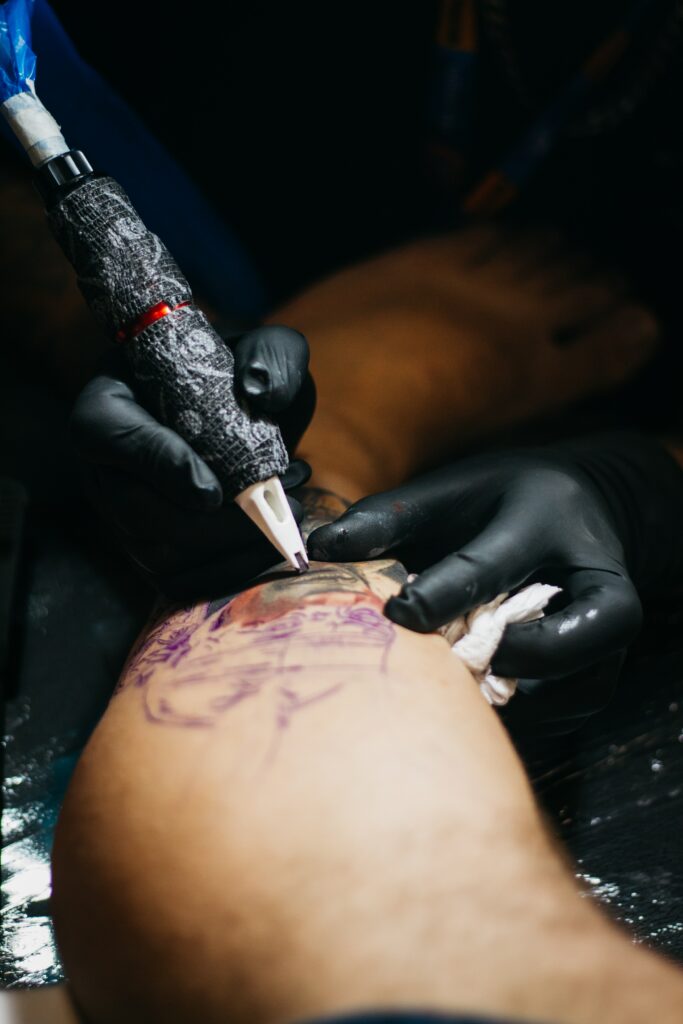Table of Contents
In today’s blog, we’re not just dipping our toes into the inkwell, we’re diving deep into the undercurrents of time to pull out the buried treasure that is the history of tattoos. A subject that proves our skin-deep fascination isn’t a recent obsession but a tale as old as civilization itself.

Prepare to have your mind tattooed with facts and stories that unravel how this art form evolved, transitioned, and survived across cultures and continents. No, you’re not boarding a time machine, but by the end of this post, you’ll feel like you’ve taken a whirlwind tour through epochs, witnessing the first marks on mummified skin in ancient Egypt, watching the intricate hand-tapped tattoos of Polynesia come to life, and marching alongside Roman soldiers branded with their legion’s emblem.
It’s a thrilling ride that will make you look at your own ink – or the one you’re planning to get – in a completely new light. This won’t just be a simple history lesson, it’ll be a rich and riveting narrative that brings alive the heartbeats and pulses that have echoed through the ages, expressing identity, beliefs, and values through the timeless language of tattooing.

History of Tattoos: The Origins
Picture this: it’s 3370 BC, 5,390 years ago. Pyramids and smartphones don’t exist yet, but guess what does? Tattoos! Yes, you heard right. Our ink obsession predates even the birth of Christ by a mind-blowing 3,370 years. Tattooing is an art form that has evolved and transformed significantly over time, influenced by cultural shifts, technological advancements, and changing social norms.
Ancient Beginnings
The earliest evidence of tattooing dates back thousands of years, with tattooed mummies like Ötzi the Iceman (who lived around 3300 BC) offering compelling proof of tattooing in prehistoric times. Tattoos were prevalent in many ancient cultures, including the Egyptians, Polynesians, and Native Americans, where they served purposes ranging from status symbols and cultural rites to medical treatment.
Middle Ages to the 18th Century
In Europe, tattooing seemed to fade during the Middle Ages due to the influence of Christianity, which viewed tattooing unfavorably. However, by the 18th century, tattoos had reemerged as a common practice among sailors who encountered the practice during their travels, particularly in the Pacific Islands.
19th Century to Early 20th Century
The modern era of tattooing began in the late 19th century with the invention of the electric tattoo machine. This tool made tattooing more efficient and less painful, helping to popularize the practice. However, during this time, tattoos were still predominantly associated with sailors, soldiers, and the working class.
Denmark, Pioneer in Scandinavia
Fast forward to the late 19th century in Denmark. Here, in Nyhavn (Copenhagen), tattoo culture blossomed as sailors displayed tattoos from their travels. It wasn’t long before enterprising locals set up rudimentary tattoo stations, making Nyhavn the go-to place for tattoos in all of Scandinavia for nearly a century.

Early to Mid 20th Century – Rebellion and Counterculture
Post World War II, tattoos in the West became symbols of rebellion and nonconformity, popular among subcultures like bikers and rock musicians. However, they still carried a stigma in broader society, often associated with criminality or deviance.
Late 20th Century to Present – Mainstream Acceptance
In recent decades, there’s been a significant shift in how tattoos are perceived. They’ve become increasingly mainstream, acceptable, and popular across a wide range of demographics. High-quality, artistic tattoos, known as “custom work,” became popular, transforming tattooing into a respected art form. With the advent of the internet and reality TV shows about tattooing, the art form has continued to evolve and grow in popularity.
Today, tattooing techniques have diversified immensely. There are now various styles, including realism, watercolor, geometric, and many more. Tattoo artists continue to push the boundaries of what’s possible in their designs, resulting in an era of tattooing that is as varied and dynamic as any other art form.
The Significance Of Tattoos In Different Cultures?
Tattoos carry a rich and varied significance across many cultures, ranging from rites of passage, status symbols, to forms of personal expression. Let’s delve into a few examples:
Polynesian Cultures

In Polynesian cultures, such as the Maori of New Zealand and the people of Samoa, tattooing (called “tatau” in Samoa and “ta moko” in Maori language) is a vital part of cultural identity and social status. Maori facial tattoos, for example, tell the wearer’s tribal affiliation, rank, and ancestry.

New Zealand’s Maori culture used tattoos as personal IDs, representing status, rank, ancestry, and skills. These tattoos, usually around the mouth and nose, were created using bone chisels and soot. The process wasn’t just for looks; it was a rite of passage and a status symbol.
Native American Cultures
In many Native American cultures, tattoos have been used for spiritual and decorative purposes. They were often associated with religious or tribal rituals and used to symbolize various achievements, experiences, or status within the tribe.
Japanese Culture
In Japan, tattoos (known as “irezumi”) have a complex history. During the Edo period (1603-1868), they were often associated with the criminal underworld, used to mark criminals. However, tattooing also evolved as a rich art form with intricate designs and symbolism, often featuring natural elements and mythical creatures. Today, despite a shift in perception, tattoos can still carry a social stigma in Japan, often associated with the Yakuza (Japanese organized crime).
Ancient Egyptian Culture
In Ancient Egypt, tattoos were predominantly found on women and often associated with fertility and protection. The famous Priestess of Hathor, Amunet, displayed patterns of dots and lines across her body, believed to be symbols of protection during pregnancy and childbirth.
Western Cultures
In modern Western cultures, the significance of tattoos has evolved dramatically over the centuries. From the initial associations with sailors and soldiers to the counterculture movements of the mid-20th century, tattoos have increasingly become a popular form of self-expression and individuality. They often symbolize personal narratives, memories, beliefs, or aesthetic choices.
The Origins of the Word “Tattoo”
Fast forward to the Samoan Islands, where the rhythmic ‘tatau’ sound during tattooing led to our modern word ‘tattoo’. Using turtle shells and boar’s teeth, they tapped dark pigment into the skin, a tradition that caught the eye of Captain James Cook during his 1769 expedition to Tahiti.
Criminals in China Were Marked with Tattoos

In China, around 2100 BC, tattoos had a less decorative and more disciplinary role. They were used as stark warnings, marking criminals and bandits on their forehead, back, and chest.
The First Tattoo Shop Ever
In 1846, our story takes us to New York City, where German immigrant Martin Hildebrandt opened the very first tattoo shop. Shortly after, the first electric tattoo machine was patented, echoing Thomas Edison’s invention of a perforating pen. This pivotal moment inked the path for the tattoo culture we cherish today.
Conclusion
And there we have it, a historical journey through the world of tattoos. From the ancient practices of Ötzi the Iceman to the revolutionary developments in Polynesia and finally to the bustling tattoo parlors of modern cities, this art form’s rich narrative is as diverse and profound as the designs it produces.
In embarking on your own personal tattoo journey, remember a few key points. Do your research: choosing a design and a reputable artist is critical to getting a tattoo you’ll love for a lifetime. Be aware of the risks: while modern practices are generally safe, there’s always a risk of infection or allergic reactions, so ensure your artist follows proper hygiene procedures.
Consider the permanence: tattoos are a lifelong commitment. Be sure you’re ready to wear your design forever. It’s not just about the aesthetic appeal, but also the personal and emotional connection to the art etched onto your skin.
Last but not least, enjoy the process! Getting a tattoo should be a memorable, positive experience. Embrace the opportunity to express your individuality, to carry a piece of art, a moment in time, or a cherished memory on your skin.
Remember, every dot of ink holds a piece of history, a piece of identity, and a piece of you. Whether it’s your first tattoo or your tenth, you’re not just getting a tattoo. You’re participating in an ancient, enduring tradition, a vibrant tapestry woven through the centuries by diverse cultures and passionate individuals. Embrace it, enjoy it, and wear your ink with pride.




